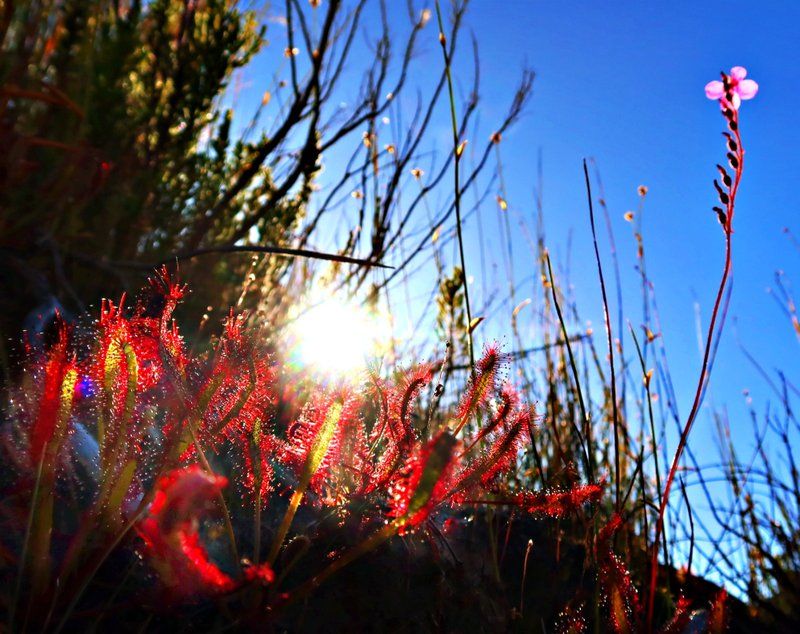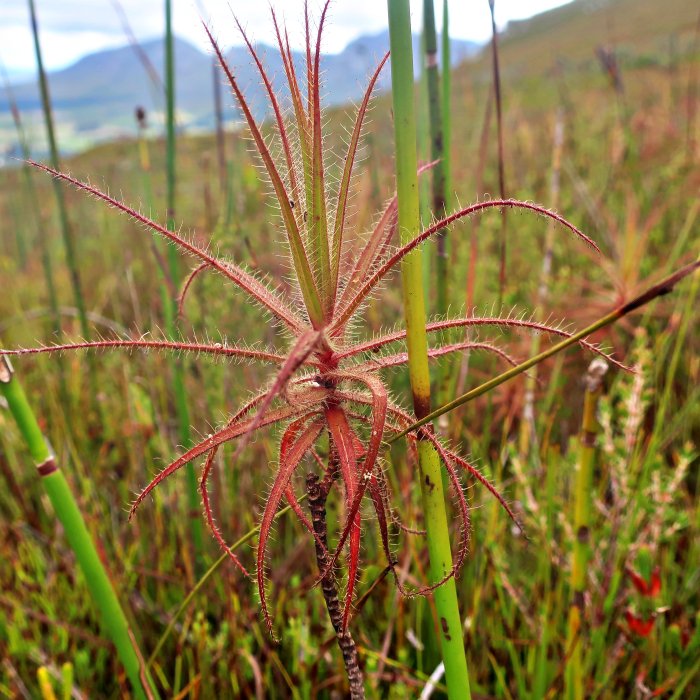The Symbiotic Life of Roridula Gorganio

Roridula, an insectivorous plant genus native to South Africa, has features that distinguish it from other insect-trapping plants.
Hikers of the Cape Fold Mountains will be familiar with the various drosera, the local insectivorous plants, found on damp slopes, like this type below in flower, deep in the Cederberg.

One less common insectivorous type of fynbos on the brink of entering the 'endangered' list, the Roridula, is found in a few locations. The plant traps insects. There is one particular bug, the Pameridea, evolved to escape the plant's sticky secretions. It sucks the life out of those other bugs that have been caught. It's excrement is used by the plant as nourishment..

Pameridea
A waxy coating on this insect's body repels the sticky substance produced by the plant. This coating is thought to protect the insect from becoming stuck on the leaf surface.
This mutually beneficial relationship is thought to have evolved over millions of years.

Evolution of the Roridula
The evolution of Roridula is still not fully understood, but it is believed that the leaves' secretion evolved as a mechanism to defend against herbivores. Over time, the plant's evolutionary adaptation of trapping insects and developed a mutually beneficial relationship with the Pameridea, the insect which became known as the Assassin.
Genetic studies have shown that Roridula is not closely related to other carnivorous plants like the Venus flytrap or the pitcher plant. Instead, it belongs to a separate lineage of flowering plants that have convergently evolved carnivorous traits. This suggests that the evolution of carnivory in plants may have arisen independently in multiple lineages, rather than being inherited from a common ancestor.
Two different species
Roridula gorgonias and Roridula dentata are two species of the Roridula genus. While these two species share some similarities, they also have some distinct differences.
A main differences between the two is geographic distribution. Roridula gorgonias is found primarily in the southwestern Cape Province of South Africa, while Roridula dentata is found further east, in the eastern Cape Province and KwaZulu-Natal.
Another difference is in their physical characteristics. Roridula gorgonias is larger than Roridula dentata, with leaves that can grow up to 10 centimeters long. Roridula dentata, on the other hand, has smaller leaves. Additionally, Roridula dentata has teeth along the edges of its leaves, whereas Roridula gorgonias does not.
Another interesting difference between the two species is that while both species rely on the Pameridea bug for nutrition, studies have shown that the insects living on Roridula gorgonias are more specialized and have a greater dependence on the plant than those that live on Roridula dentata.
~ Apparently. (I'm just a guide picking it up along the way.)
Back to notes and info page